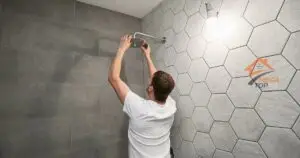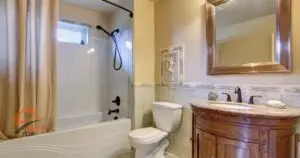Why Installing a New Toilet Yourself Can Be Challenging
Common DIY Mistakes in Toilet Installation
- Incorrectly aligning the toilet flange with the drainpipe can cause leaks.
- Not tightening bolts correctly, either too loose or too tight, risks water leakage or cracking the toilet base.
- Failing to properly seal the wax ring can result in leaks around the toilet base.
Importance of Following Manufacturer Guidelines
- Every toilet model has unique installation instructions that need to be followed precisely.
- Manufacturer guidelines often include torque specifications for bolts and details about the correct placement of the wax ring and other seals.
- Skipping steps or improvising can lead to problems later, including voiding warranties.
Tools Required for a Successful Installation
- Adjustable wrench to tighten the bolts.
- Flathead screwdriver for removing and securing small parts.
- Plumber’s putty to create a watertight seal around joints.
- A hacksaw may be needed to trim the bolts if they are too long.
Step-by-Step Guide to Installing a New Toilet
Removing the Old Toilet
- Turn off the water supply and flush the toilet to empty the tank and bowl.
- Disconnect the water supply line from the toilet.
- Unscrew the nuts securing the toilet to the floor and carefully lift the toilet off the flange.
- Remove any remaining wax ring residue and inspect the flange for damage.
Cleaning the Flange and Inspecting the Area
- Thoroughly clean the flange area, removing old wax and debris to ensure a clean surface for the new wax ring.
- Check the condition of the flange. If it’s cracked or broken, you may need to replace or repair it before proceeding.
Installing the New Toilet Flange
- Fit the new flange securely over the drainpipe. It should sit level and be flush with the floor.
- Align the flange bolts, ensuring they are properly positioned to secure the new toilet.
Placing the Wax Ring for a Proper Seal
- Choose a new wax ring that fits your toilet model.
- Place the wax ring on the flange or the base of the toilet, depending on the manufacturer’s recommendation.
- Make sure the wax ring is centered to avoid leaks.
Positioning and Securing the New Toilet
- Carefully lower the new toilet onto the flange, aligning the bolts with the holes in the toilet base.
- Press down gently to seat the toilet and compress the wax ring, ensuring a tight seal.
- Secure the toilet by tightening the bolts, but be cautious not to overtighten, which could crack the toilet base.
Connecting the Water Supply Line
- Reattach the water supply line to the toilet tank, ensuring a snug but not overtight connection to avoid leaks.
- Turn on the water supply and check for any signs of leaking.
Common Problems You May Encounter During Installation
Leaks Around the Toilet Base
- Leaks are often caused by improper wax ring placement or an uneven flange. If you notice water around the toilet base after installation, the wax ring may need to be replaced or repositioned.
Improper Toilet Leveling
- An unlevel toilet can cause rocking, which might lead to long-term damage. Shims can be placed under the base to stabilize and level the toilet.
Loose Toilet Bolts
- If the bolts securing the toilet to the flange are not tight enough, the toilet may shift over time, leading to leaks or damage. However, over-tightening can crack the porcelain, so be careful to tighten them just enough.
Tools You’ll Need for DIY Toilet Installation
- Adjustable wrench: Essential for loosening and tightening bolts.
- Flathead screwdriver: For removing and securing screws.
- Plumber’s putty: Helps create a seal around joints and fixtures.
- Wax ring: This provides the seal between the toilet and the flange.
- Flange bolts: For securing the toilet to the floor.
- Shims: Useful for leveling the toilet on an uneven floor.
How Long Does It Take to Install a Toilet Yourself?
Typical Time Frame for DIY Installation
- For an experienced DIYer, installing a toilet can take around 2-3 hours, including removing the old toilet and installing the new one.
- First-time installers should allow extra time for measuring, troubleshooting, and learning the steps.
Factors That Can Affect the Time
- The condition of the old toilet and flange: Removing rusted or damaged components may take longer.
- Unexpected issues like an uneven floor or leaky pipes can extend the installation time significantly.
Plumbing and Sealing Tips for Installing a Toilet
Ensuring a Tight Seal with the Wax Ring
- The wax ring is crucial for preventing leaks. Make sure the ring is positioned properly on the flange and press down the toilet firmly but gently to compress the wax and create a seal.
- Some wax rings come with a plastic sleeve to help guide the seal, but it’s important to select the right size for your toilet model.
How to Tighten the Toilet Bolts Without Cracking the Base
- Tighten the bolts in a crisscross pattern to ensure even pressure is applied to the toilet base.
- Be careful not to overtighten, as porcelain can crack under too much pressure.
When You Should Call a Professional for Toilet Installation
Complex Plumbing Issues to Watch For
- If the flange is damaged or sits too low, you may need a plumber to adjust or replace it.
- Persistent leaks or water damage after installation are signs that you should seek professional help.
The Risk of DIY Installations Gone Wrong
- Mistakes such as improper alignment or failing to create a watertight seal can lead to long-term issues, including mold, water damage, and costly repairs.
- Professional plumbers are trained to spot potential issues during installation, saving you from future headaches.
The Risks of Installing a Toilet Incorrectly
Water Damage and Leaks
- Improper installation of the wax ring or failing to tighten the bolts adequately can cause leaks. Over time, water damage can weaken the floor beneath the toilet.
Plumbing Backups and Clogs
- Incorrectly positioning the toilet flange or misaligning the drain pipe can result in drainage problems. Backups and slow drainage can occur if the toilet isn’t installed properly.
Structural Damage from Leaks Over Time
- Leaks that go unnoticed or unfixed can cause serious damage to the subfloor or surrounding walls, leading to expensive repairs.
Benefits of Hiring a Professional for Toilet Installation
Avoiding Costly Repairs Due to DIY Errors
- A professional plumber ensures that all connections are secure and sealed correctly, reducing the risk of future issues.
- Small mistakes during installation can lead to costly repairs down the road, which can be avoided by hiring an expert.
Ensuring Proper Function and Longevity of Your Toilet
- Proper installation ensures the toilet functions efficiently and lasts longer without the need for frequent repairs or adjustments.
Warranty and Professional Guarantees
- Many professional plumbers offer warranties on their work, giving you peace of mind and protection if any issues arise after the installation.
Compare DIY vs Professional Services
Time and Effort Required for DIY
- Installing a toilet yourself can take several hours and may require multiple trips to the hardware store if unexpected problems arise.
- Professionals complete installations more efficiently and often in a fraction of the time.
Costs of Mistakes in DIY Toilet Installation
- A small error, like a poorly seated wax ring, can lead to costly water damage repairs.
- Professionals have the expertise to avoid such mistakes, potentially saving you money in the long run.
Why Professionals Can Do the Job Faster and More Efficiently
- Plumbers have the tools and experience to quickly resolve common installation issues.
- Hiring a professional can reduce stress and ensure the toilet is installed correctly the first time, without trial and error.
FAQ
It can be challenging, especially if you're not familiar with plumbing. Hiring a professional ensures a faster, more reliable installation with fewer risks of mistakes.
You'll need basic tools like wrenches, a screwdriver, and plumbing tools. However, for a precise installation, professionals use specialized equipment.
It's not recommended. Always use a new wax ring to avoid leaks. A professional plumber ensures proper sealing and installation every time.
It can take a few hours for a DIY installation, but unexpected issues can prolong the process. Professionals typically complete the task more efficiently.
An improper installation can lead to leaks, water damage, and plumbing issues. Hiring a professional helps prevent these costly mistakes.






